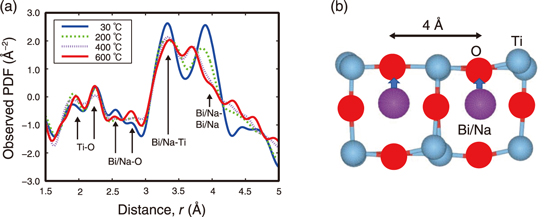
Fig.5-12 Crystal structure of Bi0.5Na0.5TiO3, which is expected to be a lead-free piezoelectric material

Fig.5-13 (a) Observed pair distribution functions (PDFs) for Bi0.5Na0.5TiO3 at various temperatures.
(b) Structure obtained by model fitting of the PDF. This is the top view of Fig.5-12
A piezoelectric material is a unique material that expands and contracts when an electric field is applied. Piezoelectric phenomena are based on the polarization caused by the displacement of ions and cations. At present, lead is used in many piezoelectric materials; hence, the development of environment-friendly materials is desired. Bismuth sodium titanate (Bi0.5Na0.5TiO3; BNT) is expected to be a candidate for lead-free piezoelectric materials. The crystal structure of BNT is shown in Fig.5-12. Polarization occurs in BNT at room temperature. When the temperature is raised, the polarization disappears once at approximately 100 ℃; a larger polarization than that observed at 30 ℃ is observed in the case of the high-temperature phase at temperatures above 200 ℃. Clarifying the origin of the polarization mechanism in the high-temperature phase is expected to boost the development of novel piezoelectric materials.
To develop new piezoelectric materials, it is necessary to observe their microstructure. In general, in crystal structure analysis, a periodic structure is assumed to obtain the average structure. However, in piezoelectric materials, there may be interferences in the periodic structure due to compositional randomness, and it is difficult to determine the atomic positions from the traditional average structure analysis. We have proposed a method of using the pair distribution function (PDF) for synchrotron high-energy X-rays at SPring-8. This method enables the visualization of the detailed structure from the distribution of interatomic distances. In particular, synchrotron radiation can extract the precise structural changes that deviate from periodicity.
In this study, PDF analysis was performed to clarify the positions of ions in the high-temperature phase of BNT.Fig.5-13(a) shows the PDFs obtained at 30 ℃ (blue line) and high-temperature phase (red line). Several peaks indicating the atomic distance were observed. In particular, in the high-temperature phase, the intensity of the peak corresponding to the distance between Bi/Na-Bi/Na at 4 Å decreases with temperature. The positions of Bi ions are shifted from the average structure. These results are shown in Fig.5-13(b). In the high-temperature phase of BNT, the displacement of Bi in the direction of the arrow produced a large polarization.
We clarified the polarization mechanism of BNT piezoelectric material by PDF analysis. To develop an excellent piezoelectric material that realizes a large displacement of Bi ions even at 30 ℃ we are continuing the research and development by examining substitution with various elements.
This work was supported by JSPS KAKENHI Grant-in-Aid for Scientific Research (C) (JP19K04502), “Fabrication of artificial relaxor using hybrid structure and application to creation of next generation multifunctional materials”.
(Yasuhiro Yoneda)